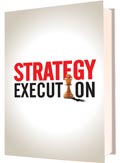Popular Searches
Useful Links
Mergers, Acquisitions and Takeovers Case Study
Case Title:
Lenovo Acquires IBM’s PC Division - Will Lenovo Gain?
Publication Year : 2005
Authors: Arpita Siddhanta, Somnath Chakraborty, Aruna N
Industry: Engineering, Electrical and Electronics
Region:China
Case Code: MAA0110B
Teaching Note: Not Available
Structured Assignment: Not Available
Abstract:
On December 8, 2004, Lenovo, China’s largest and Asia’s leading Personal Computer (PC) vendor, announced that it would acquire global giant IBM’s PC division. Lenovo was reported to pay IBM, $1.25 billion, to get a foothold in the market of the global leading brand, and thus a gateway to other international markets. Further, the deal made Lenovo the world’s third largest producer of PCs after Dell and Hewlett Packard (HP), with around 8% of the global market share. IBM, in turn, acquired 18.9% stake in Lenovo, though it took its operations off its books after the acquisition. The deal was judged as a significant one for IBM as it tried to gain a good reputation in the burgeoning consumer markets of China through selling its PCs there. IBM was expected to sell its servers and services, on which the company wanted to concentrate after the acquisition, in China in the near future.
After the acquisition, during 2005-2006, Lenovo continued its significant profitable growth in the Chinese PC market and reached new heights in the global market. With IBM’s ‘Think’ products and self-brand ‘Lenovo 3000 series PCs’, Lenovo targeted the Small and Medium-sized Businesses (SMBs), along with IBM’s typical large enterprise market. On August 3, 2006, Lenovo reported results for the first fiscal quarter of 2006-2007 which ended on June 30, 2006. It showed in the report that its revenue of $3.5 billion jumped 38% from the same period in 2005. However, analysts claimed it as misleading. They stated that the first quarter figure of 2006 added IBM’s three months of revenue, whereas the same period previous year included the global giant’s two months of revenue. The fact was, based on IBM and Lenovo’s 2003 sales figure, it was clear that 75% of the joint venture’s revenue would come from IBM’s PC business. Further, it was also known that Lenovo had to rip the IBM-Think brand name after 5 years from the completion of the agreement. Hence, analysts seemed skeptical about Lenovo’s success in the international scene in the future. They questioned whether Lenovo would be able to maintain its ‘new’ revenue figure and hence would gain from the acquisition after 5 years, as the global PC buyers were likely to refuse the IBM products without the ThinkPad tag.
Pedagogical Objectives:
- To understand the global PC market
- To understand Lenovo’s acquisition strategies
- To understand advantages of acquisition to Lenovo
- To analyse whether the acquisition will payoff.
Keywords : Mergers,Acquisitions,Alliances Case Study;Acquisition; IBM-Brand name; Global PC market; Chinese PC market; Thinkpad; Intellectual Property; Agreement; expansion plan; IBMs Servers and services; IBMs PC Division; entry strategy; joint venture; small and medium based business; integration plan; low price; tough competition
Contents :
The Global PC Market in 2005-2006
Worldwide PC Shipment in First Quarter of 2005
Lenovo & IBM before and after Acquisition
The Acquisition
The Making of the IBM-Lenovo Deal
Benefits for Lenovo
Lenovo: After the Acquisition
Lenovo’s ‘Think’ Performance
Lenovo’s ‘3000’ Performance
Related Case Studies
- »Alcatel and Lucent Merger - Creating a Telecom Titan
- »Seagate’s Acquisition of Maxtor: Strengthening Storage leadership?
- »Hewlett Packard’s Acquisition of Mercury: Strengthening its Presence in Corporate Applications Software
- »Lucent Technologies-Alcatel Merger: The Potential Synergies
- »Lenovo’s Big Opportunity: IBM?
Recently Bought Case Studies

 Mergers, Acquisitions and Alliances - Vol. I
Mergers, Acquisitions and Alliances - Vol. I
Price: $35
Hardcover edition
ISBN 81-314-0340-8 Mergers, Acquisitions and Alliances - Vol. II
Mergers, Acquisitions and Alliances - Vol. II
Price: $30
Hardcover edition
ISBN 81-314-0537-0 Strategy Execution
Strategy Execution
Price: $50
Hardcover edition
ISBN 978-81-314-2457-5- View all Casebooks »
Case Studies On
 Course Case Mapping For Managerial Economics
Course Case Mapping For Managerial Economics
Price: $Course Case Mapping For Managerial Economics - I
Hardcover edition Course Case Mapping For Quantitative Methods
Course Case Mapping For Quantitative Methods
Price: $Course Case Mapping For Quantitative Methods - I
Hardcover edition Course Case Mapping For Human Resource Management
Course Case Mapping For Human Resource Management
Price: $Course Case Mapping For Human Resource Management - I
Hardcover edition- View All Course Casemaps>
Course Case Mapping For
 An Interview with Mr. Jaswant Singh, Former Cabinet Minister, Government of India.
An Interview with Mr. Jaswant Singh, Former Cabinet Minister, Government of India.
Price: Rs.1000 An interview with Mir Ranjan Negi, Former Indian Hockey Coach
An interview with Mir Ranjan Negi, Former Indian Hockey Coach
Price: Rs.1000 An interview with B.V.R. Mohan Reddy, Founder and Chairman, Infotech EnterprisesS Limited
An interview with B.V.R. Mohan Reddy, Founder and Chairman, Infotech EnterprisesS Limited
Price: Rs.1000- View all Video Interviews»
Video Interviews
 Training and Development
Training and Development
Executive Brief with Anjali Mukherjee
Highly Recommended for Human Resource Management / Training and Development Course You Can’t Play by Rules, Always
You Can’t Play by Rules, Always
Executive Brief with R.D. Prasad, Product Manager.
Highly Recommended for Organizational Behavior Course New Recruit MBAs Attitudes
New Recruit MBAs Attitudes
Executive Brief with Lopamudra Ray, Keya Gupta and Deepika Lingala.
Highly Recommended for Organizational Behavior Course- View all Executive Briefs»
Executive Brief
 Dr. Michael Hammer
Dr. Michael Hammer
Visiting Professor at MIT and a Fellow at Oxford University.
Speaks on Change Management Roger L Martin
Roger L Martin
Dean, The Joseph L Rotman School of Management, Toronto.
Speaks on Corporate Social Responsibility W Chan Kim & Renee Mauborgne
W Chan Kim & Renee Mauborgne
Co-Founders and Co-Directors of the INSEAD Blue Ocean Strategy Institute.
Speaks on Blue Ocean Strategy- View All Executive Interviews»

